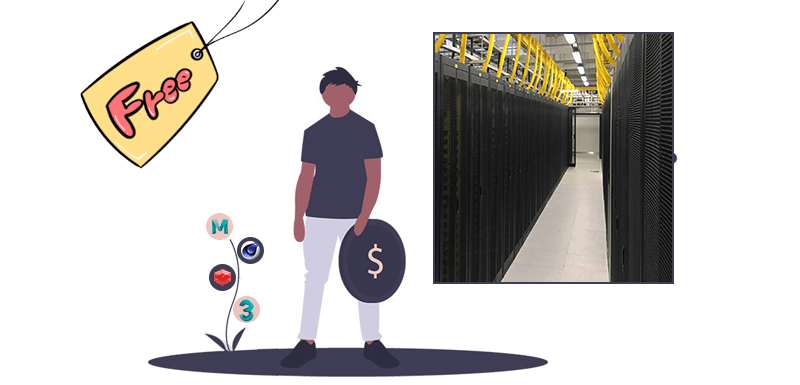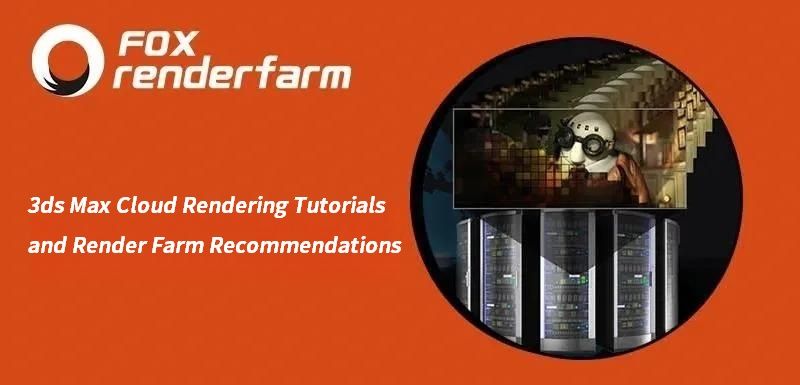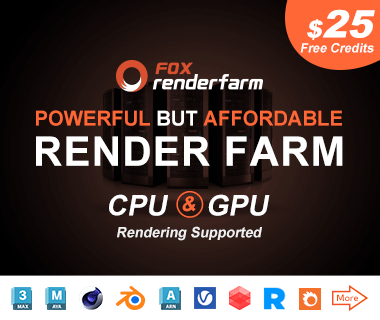How to Render with 3ds Max

3ds Max is a 3D production software with a huge user group, which is widely used in the fields of Film and Television, Architectural Visualization, Advertising, Games, and other fields. For 3d artists, the most troublesome is probably rendering. If you use your own computer to render, you will often face the phenomenon of slow render speed and long waiting time, and some larger pictures will even crash the computer directly.
In fact, render 3ds Max projects is not that complicated at all! Today I will introduce how to use cloud render farm to achieve the purpose of accelerating your render speed.
Take Fox Renderfarm as an example, they have two options: web page and desktop client. The specific usage methods/steps are as follows:
3ds Max web submit tutorial
I. Preparations for 3ds Max web submission:
1. Register to get an account.
1.2 Compare the local and could asset directories.

II. 3ds Max web submission process (4 steps: submit > analyze > render > download):
2.1 Click “Submit” button on the left, select the software for submission > set a project path (Note: this project path contains all the materials used for the Max file) > select the document for rendering, then click “Next”.

2.2 Add software configuration after submitting the job (Note: regarding the software and plugin used in the file production, VRay renderer doesn’t need configuration), click “Go Analysis” and wait patiently for the analysis to be completed.

2.3 Click the job with “Analysis Done”, set render parameters and then submit it for rendering (Note: the actual rendering starts only at this job)

2.4 On the rendering page, click the job > export the file > download.

3ds Max desktop client submit tutorial.
1.Sign in the desktop client to enter the main interface


2.Drag the max file to the job area in the client, thus to trigger the submission and start the scene analysis.

3. Add or select the software plugin version corresponding to the file and click “Next” to enter the analysis page.


4. Click “Next” when the analysis is done (Note: corresponding prompt will appear in case of any error in the analysis results or warning thereof) and set render parameter setting (including: common settings and Vray settings).


4.1. Common setting:

4.2. Vray settings:

5. Click “Submit” to start the uploading. The rendering is automatically started upon the completion of submission, and hence the submission job is successful.


Because of the high requirements of the machine's hardware during the rendering process, many people's own computers cannot support the render requirements of large files, and the render farms has solved many 3D artists' concerns about this part. With the render farm, sometimes even a 1-month project can be rendered in 15 minutes, and the rendering is completed without using the local machine, and the 3D Artist can spend more time on creation.
Recommended reading
Top 9 Best And Free Blender Render Farms of 2025
2024-12-30
Revealing the Techniques Behind the Production of Jibaro "Love, Death & Robots", Which Took Two Years to Draw the Storyboard
2025-02-10
Top 10 Free And Best Cloud Rendering Services in 2025
2025-03-03
Top 8 After Effects Render Farm Recommended of 2025
2025-02-10
Top 5 Best and Free 3d Rendering Software 2025
2025-02-10
Shocked! The Secret Behind Using 3D to Make 2D Animation was Revealed!
2025-02-10
How to Render High-quality Images in Blender
2024-12-04
Easy Cel Shading Tutorial for Cartoon in Blender Within 2 Minutes
2025-02-10
Partners
Previous: Blender Creations: How to Sprinkle Some Fun in Characters
Next: How much time will I save with a render farm?
Interested






